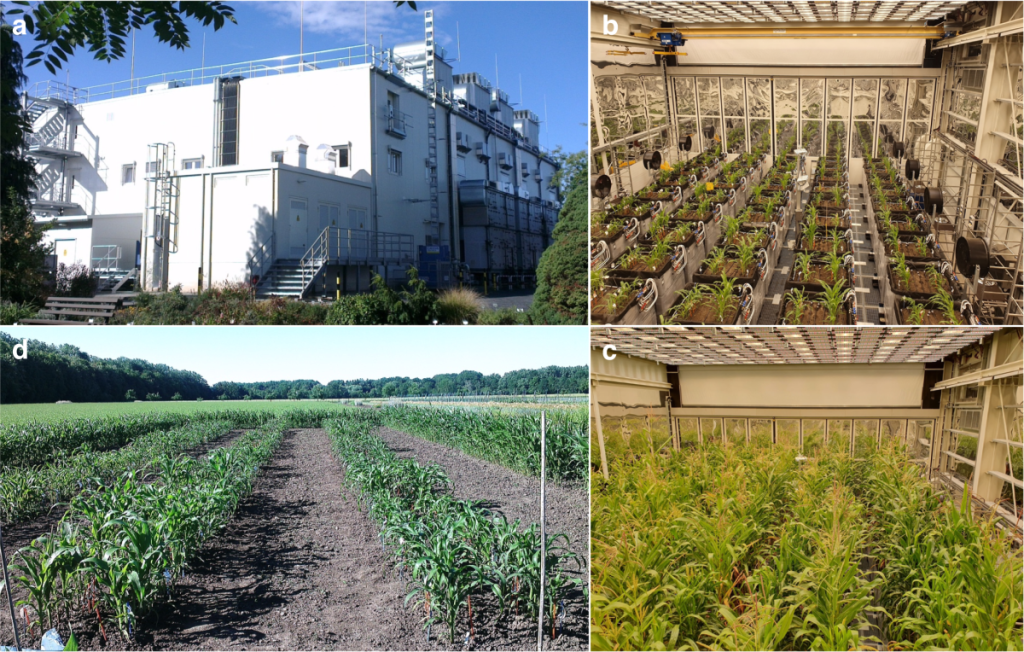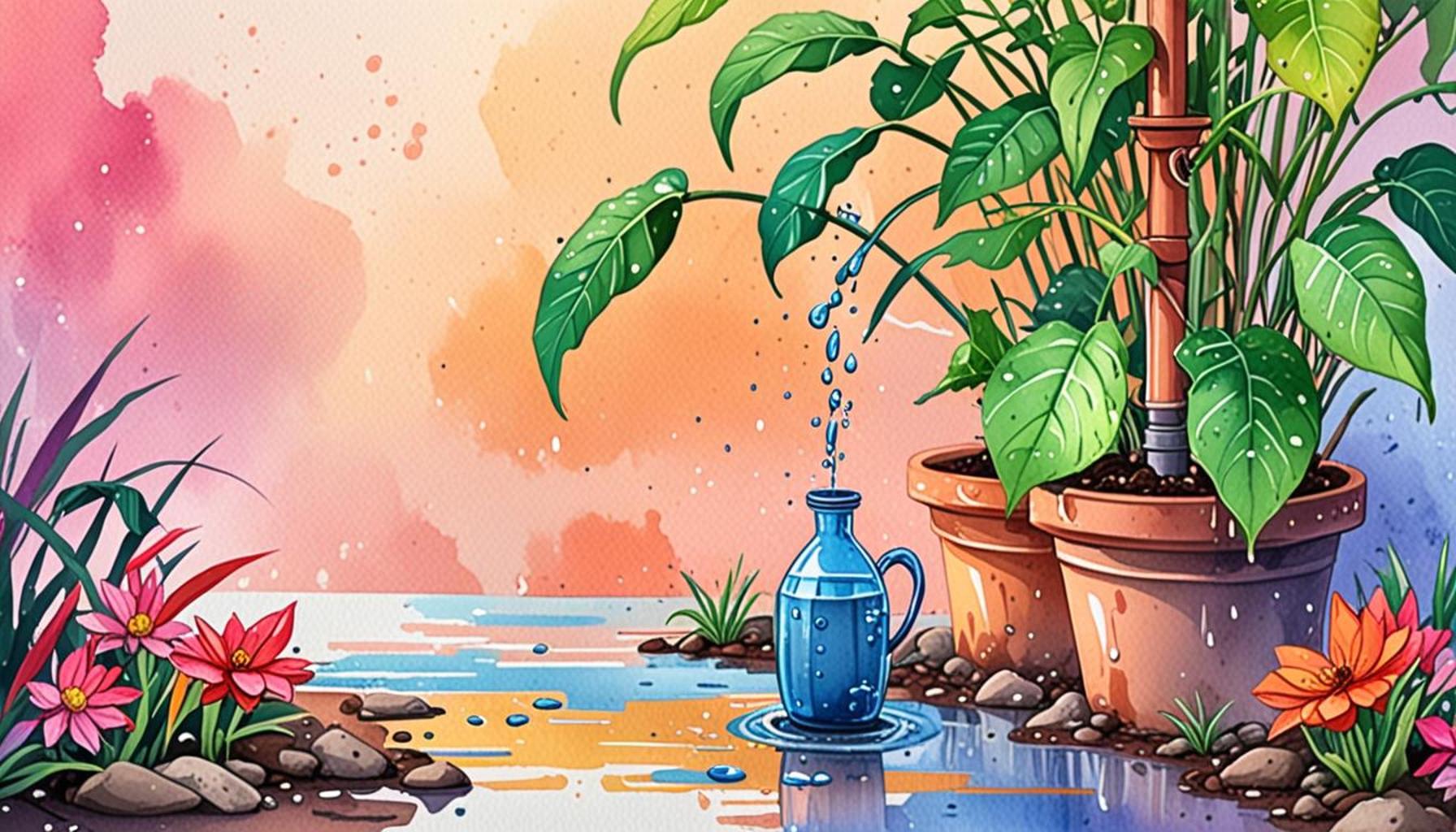Night Watering Techniques: Advantages and Disadvantages for Plant Growth

Exploring the Benefits and Drawbacks of Night Watering
As the sun sets, a unique opportunity arises for gardeners and plant enthusiasts: night watering techniques. This approach, often overlooked, can significantly influence the health and growth of plants. But is it the best choice for every garden?
Night watering has gained popularity for several compelling reasons, including:
- Reduced evaporation: Cooler night temperatures minimize water loss, allowing for more efficient watering. During the hotter parts of the day, evaporation can steal as much as 30% of the water intended for plants. By watering at night, especially in regions with high summer temperatures, the moisture has a better chance to seep into the soil, benefiting root systems.
- Less stress on plants: Watering at night reduces heat stress during the day. Plants, particularly those stressed from high daytime temperatures, often struggle to absorb water effectively. Providing them with moisture when temperatures are lower can help maintain their vitality and resilience.
- Increased absorption: Plants can absorb moisture without the immediate threat of drying out. This means roots can take their time to soak in the water and nutrients, potentially leading to stronger and healthier growth. For gardeners growing sensitive crops, this strategy can be quite beneficial.
However, these techniques come with potential downsides that every gardener should consider:
- Increased mold growth: Watering wet leaves overnight can encourage the development of diseases like powdery mildew and other fungal infections. This is particularly concerning in humid areas or where air circulation is poor. Gardeners might need to balance their desire for nighttime irrigation with the risk of promoting unwanted pathogens.
- Watering efficiency: In some cases, plants may not utilize water as effectively at night. Certain species have adapted to absorb nutrients and moisture most efficiently during the day. This is especially true for crops like tomatoes and peppers, which may respond better to morning watering.
- Inconsistent results: The effectiveness of night watering can vary widely depending on plant type and environmental conditions. For instance, while some drought-tolerant succulents thrive with overnight watering, others may remain thirsty in the low light, leading to a potential inconsistency in plant health.
By diving deeper into night watering techniques, gardeners can make informed decisions about their watering schedules. The choice between day and night watering may significantly impact yields and overall plant health. As we explore the intricacies of this gardening method, it invites an evaluation of local climate conditions, plant types, and the specific needs of each garden space. Integrating a combination of day and night watering strategies could yield the best results for optimal plant growth. Are you ready to explore these options and discover what works best for your garden?
DISCOVER MORE: Click here for eco-friendly pest control tips

Assessing the Value of Night Watering Techniques
The practice of night watering has its roots in the principles of plant physiology and environmental science. Understanding how plants interact with water at different times of day can illuminate the advantages and disadvantages associated with this technique. To maximize plant health, gardeners must consider myriad factors, from the specific plant species in their garden to regional climate conditions.
One of the most significant advantages of night watering is its inherent efficiency. For instance, during high temperatures common in many regions of the United States, watering at night can dramatically reduce water loss due to evaporation. This is particularly essential in areas like the Southwest, where dry, desert-like climates can sap precious moisture from the soil during the day. Gardens in these environments can benefit greatly from the up to 30% more moisture retention that results from nighttime irrigation.
Moreover, plant resilience can be bolstered through effective nighttime watering techniques. When temperatures drop in the evening, plants experience less heat stress, making it easier for them to absorb water. This is especially true for crops vulnerable to heat, such as lettuce and spinach, which can thrive with the cooler, more controlled hydration that nighttime offers.
However, it is essential for gardeners to consider the potential drawbacks of night watering alongside the advantages. One of the key issues arises with the risk of disease development. Water that lands on plant foliage at night can create a damp environment that fosters fungal infections and other diseases. In states like Florida, where humidity may already be higher than normal, this risk is crucial to mitigate. Gardeners in these regions must pay close attention to air circulation around their plants and perhaps even opt for a different approach if mold and mildew are persistent problems.
Additionally, the effectiveness of night watering can vary by plant type. Certain plants, particularly those adapted to absorb resources during the day like tomatoes and cucumbers, may find nighttime irrigation less beneficial. This could lead to inconsistent growth patterns and nutrient uptake deficiencies. A gardener growing a diverse crop must adapt their watering strategy based on the specific needs of the plants.
- Water Efficiency: Night watering reduces evaporation, leading to more moisture available for plant roots.
- Plant Stress: Cooler evening temps help minimize daytime heat stress during hydration.
- Disease Risk: Increased warmth and moisture can encourage diseases like mildew.
- Plant Adaptation: Some plants may better utilize water during the day, impacting their responsiveness to night watering.
Before implementing a night watering strategy, gardeners should carefully evaluate their local climate conditions and plant varieties. This thoughtful assessment can facilitate informed decisions that not only enhance plant health but also contribute to a thriving, productive garden. The exploration of when and how to water can uncover valuable insights that may redefine traditional gardening practices.
| Advantage | Description |
|---|---|
| Reduced Water Evaporation | Night watering minimizes evaporation rates, ensuring that plants receive more water. |
| Lower Heat Stress | Watering in cooler hours reduces heat-related stress on plants, promoting healthier growth. |
| Improved Root Absorption | Cooling soil temperatures encourage effective root absorption, enhancing plant hydration. |
| Time Efficiency | Watering at night often fits better in busy schedules, leaving more time for other gardening tasks. |
Night watering techniques present numerous advantages for gardeners seeking to enhance their plants’ growth. First and foremost, reduced water evaporation during the cooler hours of the evening allows for optimal absorption by plants, leading to improved hydration levels. Additionally, by alleviating heat stress, plants are better equipped to cope with fluctuating temperatures, fostering a healthier growing environment.Furthermore, after the sun sets, soil temperatures decrease, providing a more conducive setting for root absorption. This aspect is particularly critical for promoting growth and overall plant vitality. An added benefit is the time efficiency that night watering offers, freeing up precious daylight hours for other essential gardening tasks. Exploring various night watering methods can unlock a wealth of opportunities for achieving thriving plant growth.
DISCOVER MORE: Click here to learn about crop rotation benefits
Navigating the Challenges of Night Watering
While the prospects of night watering techniques can seem promising, various environmental and practical challenges necessitate careful navigation. One such challenge is the timing of watering. Optimal moisture levels are particularly pivotal for different growth stages of plants, and nighttime irrigation may not align with when plants require water most. For instance, seedlings and young plants thrive on consistent moisture, and delaying watering until nighttime could lead to unnecessary stress. This misalignment can hinder their potential for robust growth.
Moreover, the complexity of implementing a night watering schedule increases for those utilizing automatic irrigation systems. Some systems are designed for daytime use, with timers and pumps calibrated to operate in brighter conditions. Transitioning to a night schedule might require adjustments or even a complete overhaul of the irrigation setup, thus leading to additional time and expenditure. Gardeners may also need to consider electricity usage when watering at night, particularly if they rely on electric pumps for manual systems. Understanding the long-term implications on energy costs is vital in determining whether the benefits outweigh the drawbacks.
Another intriguing aspect of night watering to consider is its potential impact on soil biology. The soil is teeming with microorganisms vital for nutrient cycling and overall plant health. Nighttime watering creates a cooler soil environment, which can alter microbial activity. Interestingly, certain beneficial bacteria may flourish in these cooler conditions, while others may thrive in the warmth of the day. Finding a harmonious balance is key, and techniques such as misting or drip irrigation—favored for their ability to deliver moisture more effectively and reduce excessive leaf wetness—could be the answer in such scenarios.
Traditionally, homeowners in regions like California have relied on night watering for fields of flowers or vegetable gardens, but what about urban gardening? City dwellers can also experience benefits from nighttime irrigation. With pervasive city lights and ambient heat retaining moisture levels, urban environments may even see enhanced effectiveness with evening watering compared to rural areas. However, the urban setting also presents challenges, such as disruption of local fauna. Nighttime irrigation can attract unwanted pests, from raccoons to deer, which may be drawn to the moisture and food sources created by watering. Thus, gardeners must be vigilant in safeguarding their plants from local nuisances.
- Timing Concerns: Misalignment between watering schedules and plant needs can lead to stress.
- Automation Adjustments: Transitioning systems to nighttime use may involve complexity and expenses.
- Soil Microbiology: Nighttime conditions can alter microbial activity, affecting nutrient uptake.
- Urban Implications: City gardens experience both benefits and challenges with nighttime watering due to urban wildlife.
Understanding these challenges presented by night watering techniques is crucial for any gardener eager to implement this strategy. As they delve deeper into the intricacies of plant care, they may uncover which methods are best suited for their unique gardening context, ultimately shaping their cultivation practices for optimal performance.
DISCOVER MORE: Click here for tips on creating your own mini garden
Final Thoughts on Night Watering Techniques
In conclusion, the exploration of night watering techniques reveals both promising advantages and notable challenges for optimizing plant growth. As gardeners weigh these options, it’s essential to recognize that watering at night can significantly reduce evaporation and enhance hydration, particularly beneficial in regions experiencing high daytime temperatures. However, the intricacies of timing, equipment adjustments, and the potential alteration of soil biology cannot be overlooked. Each gardener’s situation—whether in urban settings or more traditional gardens—presents unique considerations that may impact the effectiveness of nighttime watering.
Ultimately, success in implementing night watering hinges on a gardener’s ability to adapt their strategies to the specific needs of their plants, as well as their local environmental conditions. Understanding which watering techniques align with the growth stages of plants, and the influence of nighttime conditions on microbial activity, is vital to achieving the desired outcomes in plant health and productivity. By experimenting with methods such as drip irrigation or misting, gardeners can uncover innovative ways to optimize moisture delivery while minimizing drawbacks.
As interest in sustainable gardening practices continues to grow, further research into the impact of nighttime irrigation can result in valuable insights, broadening our understanding of plant care. Navigating the complexities of night watering invites gardeners to become more attuned to their plants’ needs, ensuring that their cultivation practices not only yield flourishing gardens but also promote a deeper connection to the natural cycles of growth.



